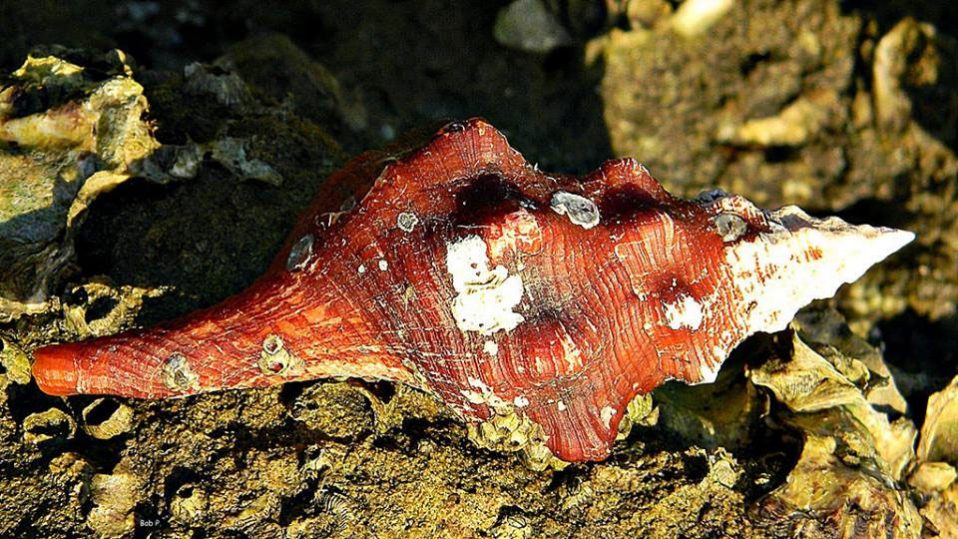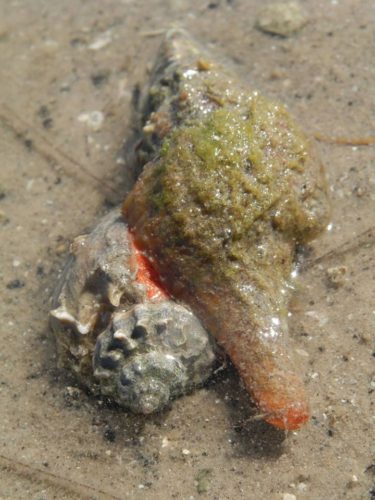The state shell of Florida, designated in 1969., is the Horse Conch (Triplofusus giganteu). The word “conch” comes from a Greek word meaning “shell.” The Horse Conch is the largest snail found in American waters and can grow to a length of two feet. It’s easily identified by the bright orange body. The shell is grayish-white to salmon in color and covered with a brown, scaly outer layer, that you will see peeling. The 10 whorls of the shell are knobbed. Young shells are orange. The animal inside the shell is orange to brick red in color. The shell protects their soft bodies from predators. Horse Conchs use a foot that extends from their shell to drag the shell along.
Horse Conchs are commonly found in seagrass beds and reefs. This snail is carnivorous and will feed on clams and mussels as well as other snails. They consume algae and detritus (poop and parts of dead organic matter.) The female attaches capsule-like structures to rock or old shells. Each capsule contains several dozen eggs. Not all eggs are fertile. Non-fertile eggs are eaten by those who are maturing in the same capsule. When the young emerge they are an orange color and usually 3.5 inches in diameter.
Commercial harvesting requires a permit and there are limits. In some areas, it’s illegal to collect them. Lee County does not allow their harvest and Manatee county does not allow more than two per day. Keep in mind that while it may be tempting to collect large numbers of shells, other organisms rely on their shells for a safe living space after the conch dies. It’s best to admire Horse Conchs for a brief time and leave it for someone else to appreciate.
The Horse Conch’s predators are primarily humans who use them for their shells and food. Other predators are octopuses who use their suction cups to suck the conch out of its shell. Some starfish can slip one of their arms into the opening of the conch and then force their stomach out and ingest the conch right from its shell.
This photograph shows how Horse Conchs make little Horse Conchs.




Recent Comments